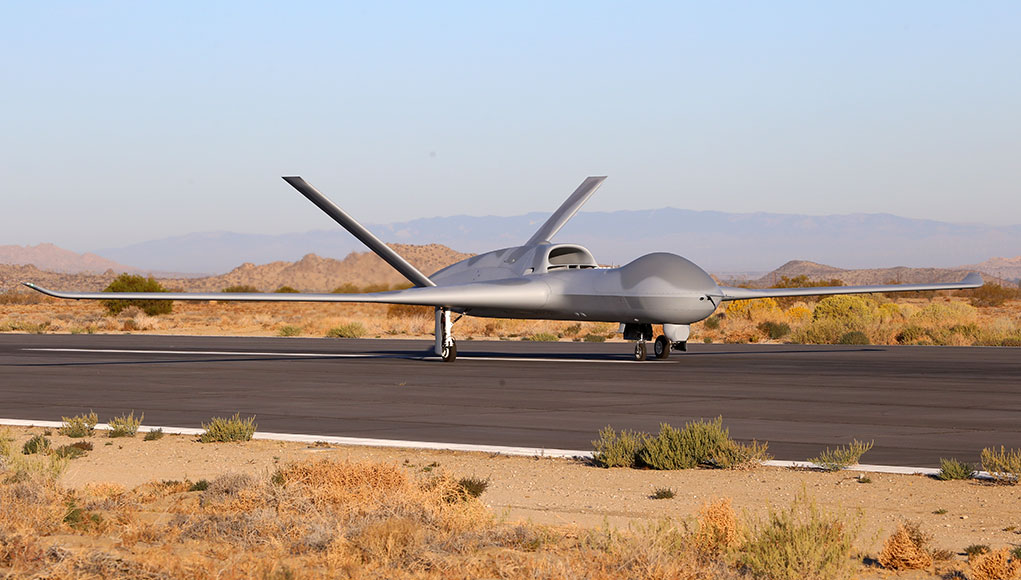General Atomics Aeronautical Systems, Inc. (GA‑ASI), successfully performed the first flight of the Avenger Extended Range (Avenger ER) remotely piloted aircraft (RPA). The flight occurred on October 27th at the company’s Gray Butte Flight Operations Facility in Palmdale, Calif.

The ER wingspan was increased by 10 foot – to 76 feet (23.16 m’); also, the drone carries 2,200 pounds (1 ton) of additional fuel, extending the legacy Avenger’s endurance from 15 hours to 20 hours. The distinctive winglets which were also implemented in the MQ-9 ER are also used with the Avenger ER, designed to improve performance and improve fuel consumption. “The increased endurance and high payload capacity will deliver tremendous capability to our customers, who need persistent situational awareness and strike mission affordability,” said Linden Blue, CEO, GA-ASI. The Avenger flew its first flight in 2009 and was acquired by the US Air Force for evaluation in 2011. To date, the Avenger has accumulated over 13,000 flight hours to date, in both test and operational flights.
The new version has an extended range and endurance, Surveillance, and Reconnaissance (ISR) and precision-strike capability, supporting a wide array of sensors and weapons payloads to perform ISR and ground support missions. Like the legacy Avenger, Avenger ER features avionics based upon the combat-proven Predator B/MQ-9 Reaper, has a 44-foot (13.41 m’) long fuselage, 3,000-pound (1.36 ton) payload bay, and is capable of flying at over 400 KTAS (740 km/h). Avenger ER, along with its predecessor, is designed to carry payloads such as the all-weather GA-ASI Lynx Multi-mode Radar, the MS-177 Electro-optical/Infrared (EO/IR) sensor, and the 2,000-pound (907 kg) Joint Direct Attack Munition (JDAM).
While the Avenger platform is not operationally used by the US Air Force, a navalized derivative of the system is considered by the US Navy for its MQ-25 ‘Stingray’ carrier-based drone. On another demonstration planned for 2018, the Avenger could carry a powerful laser, demonstrating new missile defense capabilities.
GA-ASI developed Avenger on Internal Research and Development (IRAD) funds with the intent of making an RPA that has a quick-response, armed reconnaissance capability. First flown in April 2009, the aircraft’s fuselage was extended by four feet in 2012 to accommodate larger payloads and fuel. Avenger received an FAA-issued Experimental Certificate (EC) in 2016, enabling it to operate in the U.S. National Airspace System (NAS).





















